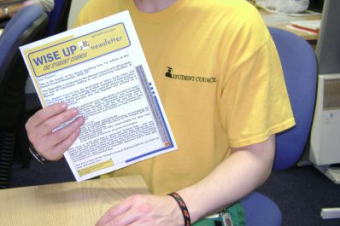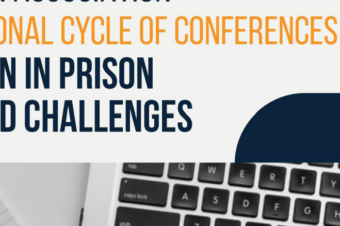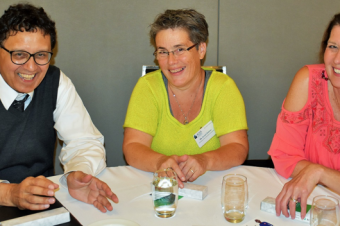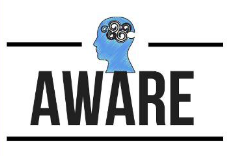EPEA chairperson Annet Bakker (NL) and former EPEA Project Coordinator Daiana Huber (RO) interviewed Dominique Antony (FR), coordinator of Euro-CIDES:

What is the most frequent need you came across, when working with prison educators in the context of educating them on radicalization aspects?
It may be important first of all to point out that with a total of 18 partners from different EU member countries and associate (Turkey) we have been working from 2016 to 2019 on different European projects (CITI-VAL, READY… GO and SERA) whose educational productions (free of access and right of use) are accessible from our website http://euro-cides.eu but also on the dedicated EPEA website. In its extension SERA+ includes the 3 previous productions as well as ESM-YA and VALMOPRIS ones. CITI-VAL focus on Education to civic and moral values, READY… GO is a tool based on physical activities and sports to identify cross-curricular competences contributing to post-release reintegration into society through job, ESM-YA mix exercises to prepare employment while VALMOPRIS is a tool for assessment.
Finally SERA, at its origin, had “de-radicalization” as topic as its origin but now vocabulary changed to “fight violent extremism”.
To come back to EPEA questionnaire, the first thing to define is what is meant by ‘prison educator’. From our experience, with many EU and associated countries, in prisons there are teachers, educators, integration and probation counsellors, psychologists too, social workers, wardens, … who may intervene in educational missions with detainees without the issue of radicalization.
Training to understand the phenomena of violent extremism from an ideological source, whether religious, political, philosophical, … usually carries out specific additional training, most often implemented after the acts of terrorism in 2015, 2016 and subsequent years, with public servants by the ministries under their jurisdiction (in France, from 2016, a 3-day training session was set up for all public servants of the various ministries, in a desire to prevent it).
But beyond any further training, it is also up to each stakeholder who feels concerned (either in terms of judicialization or prevention) to document themselves individually by appropriating the documentary resources published by the different governments based on recognized expertise.
But soon, the time will also have to come when this specific training will be integrated into the initial training of “prison educators” whatever they are, not to forget the management teams, …
Contributions to both prevention and the fight against violent extremisms today are everyone’s business.
Do you feel that in this field of work, the programs offered for staff and inmates, have a good balance between lifelong learning perspective, judicial perspective, psychological perspective and sociological one?
You will agree that it is very difficult to make a comprehensive response that speaks to each national system, especially as both staff and inmate trainings are mixed.
Regarding the training of staff, we refer the reader to our answer to question 1. For radicalized or at-risk of radicalization inmates targeted by SERA program, after a specific documentary research, the findings of the observations have directed the design of the pedagogical sequences towards the beliefs, education, interculturality, psychology and social issues all mixed with a focus on acquiring key and cross-circular skills. For SERA and CITI-VAL authors, it is not a question of “de-radicalization or disengagement”, but rather of educating targeted groups to forge their own capacity to decide, debate, defend … their opinions and/or to be openminded, so that in the end, leave them able to take good and bad decisions but with full knowledge of the facts and the risks. This is also lifelong learning perspective.
And it would be good to understand that prevention is the fundamental task, in which lifelong learning is essential to forge citizens committed to ethical values and human rights, being critical and respectful.
Do you think that the prison educators have a responsibility in the de-radicalization programs?
As SERA and CITI-VAL are educational productions that have been created mainly by prison teachers from several European countries, it would be difficult to say that teachers have no place in our programs.
Since 2015, as wrote before, vocabulary has evolved over the years and we are no longer talking about programs in ‘de-radicalization’, nor too much of “disengagement” but more of the fight against violent extremisms (religious, political, …). Rather, we prefer to talk about a “reconciliation’s program” that requires a multidisciplinarity of the trainers in which teachers in prison are of course. This being write, knowing that teachers in prison already have lot of learners for whom the priority is often and first of all the fight against illiteracy, it has become necessary to think about a cluster of teachers and multidisciplinary stakeholders prepared for the specificity that concerns us because the reciprocal goals are not similar.
When it comes to prevention, we must highlight that all the staff working in prison should contribute, since it has become a global issue and each of us must take our own responsibility.
From your experience and perspectives, is there enough involvement for the voluntary sector / NGOs outside of prison, in working with educators inside the prison on de-radicalization programs?
Your question does not go in the direction of several EU results obtained from various reflections that all conclude on the importance of ensuring a continuum “ON/OFF” (or IN/OUT) with the resource person of an inmate. All the experiences from our partnerships shown that this continuum “ON/OFF” (whether held by a teacher, a social worker, an insertion and probation counsellor, a volunteer, …), is unfortunately the major obstacle encountered because of the respective funding (ON/OFF) almost always fall under the jurisdiction of different public institutions, and therefore different stakeholders too. It is therefore not so much the statutory positioning of the interlocutor (voluntary sector, NGOs, else…) that is important, but on the one hand, the competence and expertise necessary to intervene in the theme, and on the other hand, the continuity of funding to support the actions of the resource person both inside the prison (IN) and once the person is released (OUT) over a long period of time (probably several years).
Institutional barriers should not be a hindrance to the accompanying approach.
What are the criteria that decide whether the developed program is succesful, and in what aspect (de-radicalisation itself/ growing awareness/ active participation in a learning process)
While it is quite possible to measure indicators of attendance, interest in areas as teach, participation, and/or decrease in the number of incident reports in prisons, it is very difficult to observe direct effects on (de-)radicalization for two main reasons to date:
-+- the SERA program still has little seniority in its experiments (barely a year)
-+- few researches, works and productions have so far focused on assessing the disengagement from religious violent extremism (which was not a focus in 2016 when SERA was submitted), but we have just learned that two French authors (Bouzar & Bénézeth) have very recently published in the Criminalistics Series C (n°1 Vol. 4) as well as in Journal of forensic medicine (n°1 Vol. 63) “Practical guide of assessment of disengagement from jihadist violent extremism”.
What we have seen is that the inmates who have experienced the SERA cycles have asked to continue their work. But it is not enough to attend courses to solve this problem. Before we talked about “reconciliations’ program” (plural is important). All prisoners sentenced on terrorism charges related to jihadist violent radicalization will one day be released from prison and we must also prepare them to reconcile with society, to integrate, to renew family and close ties, to have a professional project, to develop skills… That’s why we’ve been working at SERA+ based on individual needs that will be identified and regularly readjusted.
Again, and coming back to prevention, we dare say that, after testing the SERA cycles, we get the impression that they also can help from the preventive perspective.
How will you recognise/ localise radicalised prisoners?
From our point of view, it is not the competence/job of prison teachers to recognize or locate a radicalized inmate. Either the person is brought to Court on the grounds of acts/facts of violent extremism (and therefore the matter is understood), or the prison teacher/any staff from prison observes signs of radicalization (see question answered beforehand) in a learner in which case his/her responsibility will be to inform the prison administration to deal with.
There remains the question of which indicators should be as objective as possible.
In France, a summary table of tipping indicators has been published and widely disseminated. Our SERA research has also highlighted the results of VERA-2, a tool (from Dutch research and other associated countries) used in many European prisons even France, and the advice issued by the Home Office/counter-terrorism in the UK, … but these examples are not exhaustive.





